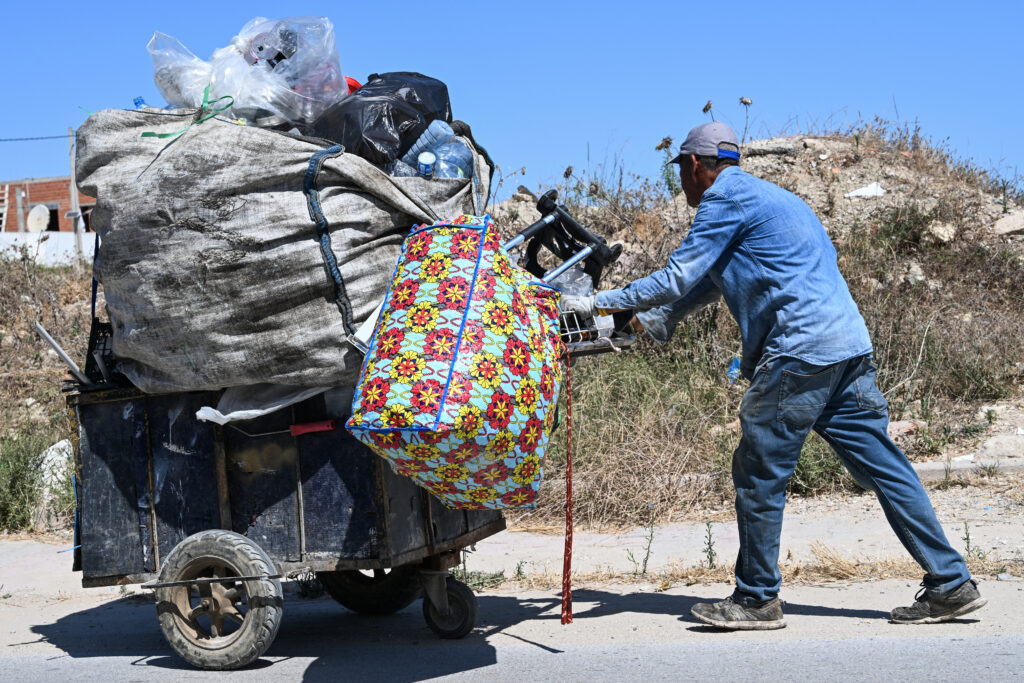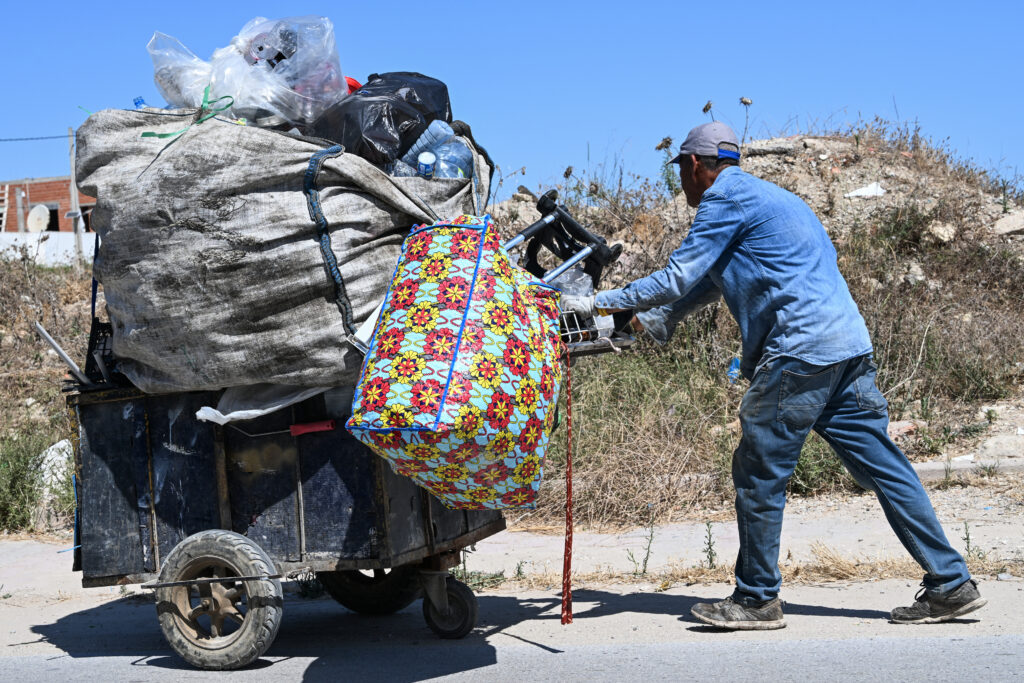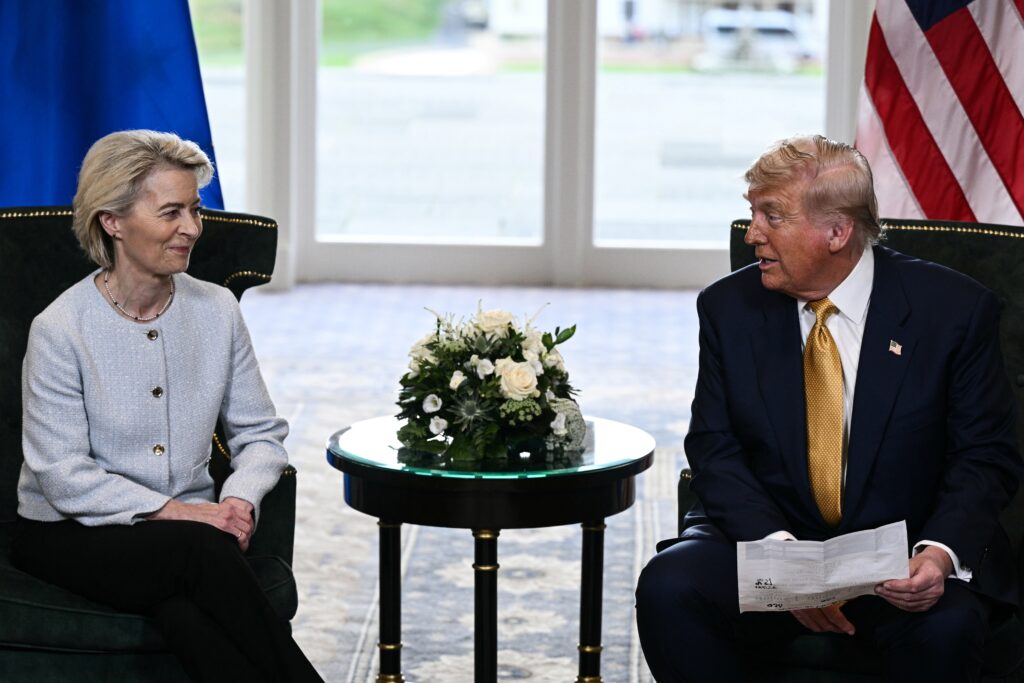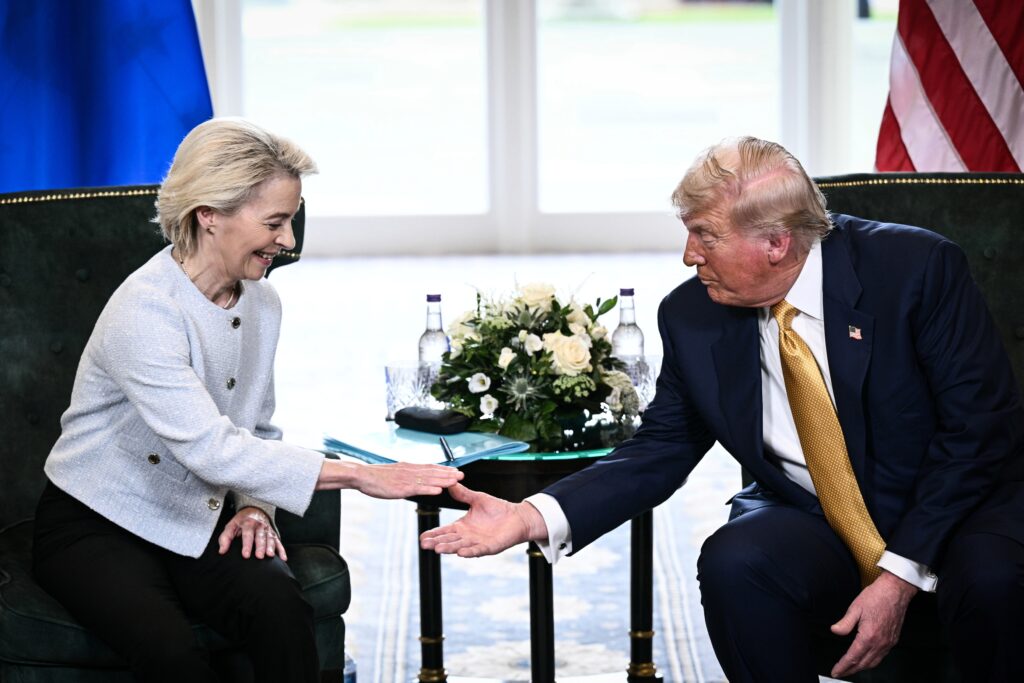Cambodge-Thaïlande: au cinquième jour des combats, l’espoir d’un cessez-le-feu
Les dirigeants thaïlandais et cambodgien sont attendus lundi en Malaisie pour apaiser les tensions qui ont dégénéré durant cinq jours d’affrontements meurtriers à leur frontière.La Thaïlande et le Cambodge s’opposent depuis des décennies sur le tracé de leur frontière commune, définie au temps de l’Indochine française, mais la région n’avait plus connu de tel épisode de violences depuis 2011. Les échanges de tirs, notamment d’artillerie, et les frappes aériennes ont fait depuis jeudi au moins 35 morts et provoqué le déplacement d’environ 200.000 personnes. Bangkok et Phnom Penh sont convenus de se rencontrer pour la première fois lundi après-midi près de Kuala Lumpur, sous l’œil des Etats-Unis et de la Chine, mais à quelques heures de la réunion, des combats continuaient de faire rage près de temples angkoriens contestés.Les deux capitales s’accusent mutuellement d’avoir ouvert les hostilités et de tenir un double langage, chaque camp ayant exprimé sa volonté de rétablir la paix, sans joindre les actes à leur parole jusque-là, malgré les appels de leurs principaux partenaires internationaux.”Nous ne pensons pas que le Cambodge agisse de bonne foi, compte tenu de leurs actions pour régler le problème. Ils doivent faire preuve d’une intention sincère”, a déclaré le Premier ministre thaïlandais par intérim Phumtham Wechayachai, depuis un aéroport de Bangkok.- Assaut nocturne -“Nous avons besoin de discussions bilatérales pour négocier l’arrêt des combats. Cependant, un cessez-le-feu ne signifie pas que tout reviendra comme avant”, a-t-il prévenu.Le Cambodge a affirmé lundi matin que le camp rival avait lancé un assaut près de temples contestés du nord-ouest.”A 03H10 du matin (20H10 GMT dimanche), les forces thaïlandaises ont continué d’attaquer en premier”, a indiqué lundi la porte-parole du ministère cambodgien de la Défense, Maly Socheata.”C’est le cinquième jour que la Thaïlande a envahi le territoire cambodgien avec des armes lourdes et le déploiement de beaucoup de soldats”, a-t-elle déclaré.Des journalistes de l’AFP présents à Samraong, dans le nord-ouest du Cambodge, à une vingtaine de kilomètres de la frontière, ont également entendu des bruits de tirs d’artillerie durant la nuit de dimanche à lundi.Dimanche soir, l’armée thaïlandaise a dit s’attendre à une “opération militaire majeure” de ses adversaires, en faisant état de combats à sept endroits différents.Phumtham Wechayachai et le Premier ministre cambodgien Hun Manet doivent se rencontrer à Putrajaya, la capitale administrative malaisienne, à 15H00 heure locale (07H00 GMT), selon Bangkok. Le chef du gouvernement malaisien Anwar Ibrahim joue le rôle de médiateur, son pays occupant la présidence tournante de l’Association des nations d’Asie du Sud-Est (Asean) dont la Thaïlande et le Cambodge sont membres.- Paix “le plus tôt possible” -La réunion sera aussi “co-organisée par le Etats-Unis, avec la participation de la Chine”, a précisé Hun Manet.Le président américain Donald Trump, qui a appelé le chef des deux camps samedi, a exhorté les deux pays à s’entendre autour d’un accord rapide, sous peine de geler les discussions portant sur les droits de douane prohibitifs qui doivent frapper ces deux économies dépendantes des exportations le 1er août.Des représentants américains sont en Malaisie pour “soutenir les efforts de paix”, a déclaré le secrétaire d’Etat américain Marco Rubio. “Nous voulons que ce conflit se termine le plus tôt possible.”Les affrontements ont officiellement fait 22 morts côté thaïlandais, dont huit soldats, et 13 morts, dont cinq militaires, côté cambodgien. Plus de 138.000 Thaïlandais ont évacué les zones à risques, selon Bangkok, et plus de 80.000 Cambodgiens ont fait de même, d’après Phnom Penh.Les relations diplomatiques entre les deux royaumes voisins, liés culturellement et économiquement, sont au plus bas depuis des décennies.L’épisode en cours tire son origine de la mort d’un soldat khmer, fin mai, lors d’un échange de tirs dans une zone contestée. Depuis, les deux royaumes ont annoncé une série de mesures qui ont tari les échanges commerciaux et le déplacement des personnes, sur fond de flambée du discours nationaliste.
Cambodge-Thaïlande: au cinquième jour des combats, l’espoir d’un cessez-le-feu
Les dirigeants thaïlandais et cambodgien sont attendus lundi en Malaisie pour apaiser les tensions qui ont dégénéré durant cinq jours d’affrontements meurtriers à leur frontière.La Thaïlande et le Cambodge s’opposent depuis des décennies sur le tracé de leur frontière commune, définie au temps de l’Indochine française, mais la région n’avait plus connu de tel épisode de violences depuis 2011. Les échanges de tirs, notamment d’artillerie, et les frappes aériennes ont fait depuis jeudi au moins 35 morts et provoqué le déplacement d’environ 200.000 personnes. Bangkok et Phnom Penh sont convenus de se rencontrer pour la première fois lundi après-midi près de Kuala Lumpur, sous l’œil des Etats-Unis et de la Chine, mais à quelques heures de la réunion, des combats continuaient de faire rage près de temples angkoriens contestés.Les deux capitales s’accusent mutuellement d’avoir ouvert les hostilités et de tenir un double langage, chaque camp ayant exprimé sa volonté de rétablir la paix, sans joindre les actes à leur parole jusque-là, malgré les appels de leurs principaux partenaires internationaux.”Nous ne pensons pas que le Cambodge agisse de bonne foi, compte tenu de leurs actions pour régler le problème. Ils doivent faire preuve d’une intention sincère”, a déclaré le Premier ministre thaïlandais par intérim Phumtham Wechayachai, depuis un aéroport de Bangkok.- Assaut nocturne -“Nous avons besoin de discussions bilatérales pour négocier l’arrêt des combats. Cependant, un cessez-le-feu ne signifie pas que tout reviendra comme avant”, a-t-il prévenu.Le Cambodge a affirmé lundi matin que le camp rival avait lancé un assaut près de temples contestés du nord-ouest.”A 03H10 du matin (20H10 GMT dimanche), les forces thaïlandaises ont continué d’attaquer en premier”, a indiqué lundi la porte-parole du ministère cambodgien de la Défense, Maly Socheata.”C’est le cinquième jour que la Thaïlande a envahi le territoire cambodgien avec des armes lourdes et le déploiement de beaucoup de soldats”, a-t-elle déclaré.Des journalistes de l’AFP présents à Samraong, dans le nord-ouest du Cambodge, à une vingtaine de kilomètres de la frontière, ont également entendu des bruits de tirs d’artillerie durant la nuit de dimanche à lundi.Dimanche soir, l’armée thaïlandaise a dit s’attendre à une “opération militaire majeure” de ses adversaires, en faisant état de combats à sept endroits différents.Phumtham Wechayachai et le Premier ministre cambodgien Hun Manet doivent se rencontrer à Putrajaya, la capitale administrative malaisienne, à 15H00 heure locale (07H00 GMT), selon Bangkok. Le chef du gouvernement malaisien Anwar Ibrahim joue le rôle de médiateur, son pays occupant la présidence tournante de l’Association des nations d’Asie du Sud-Est (Asean) dont la Thaïlande et le Cambodge sont membres.- Paix “le plus tôt possible” -La réunion sera aussi “co-organisée par le Etats-Unis, avec la participation de la Chine”, a précisé Hun Manet.Le président américain Donald Trump, qui a appelé le chef des deux camps samedi, a exhorté les deux pays à s’entendre autour d’un accord rapide, sous peine de geler les discussions portant sur les droits de douane prohibitifs qui doivent frapper ces deux économies dépendantes des exportations le 1er août.Des représentants américains sont en Malaisie pour “soutenir les efforts de paix”, a déclaré le secrétaire d’Etat américain Marco Rubio. “Nous voulons que ce conflit se termine le plus tôt possible.”Les affrontements ont officiellement fait 22 morts côté thaïlandais, dont huit soldats, et 13 morts, dont cinq militaires, côté cambodgien. Plus de 138.000 Thaïlandais ont évacué les zones à risques, selon Bangkok, et plus de 80.000 Cambodgiens ont fait de même, d’après Phnom Penh.Les relations diplomatiques entre les deux royaumes voisins, liés culturellement et économiquement, sont au plus bas depuis des décennies.L’épisode en cours tire son origine de la mort d’un soldat khmer, fin mai, lors d’un échange de tirs dans une zone contestée. Depuis, les deux royaumes ont annoncé une série de mesures qui ont tari les échanges commerciaux et le déplacement des personnes, sur fond de flambée du discours nationaliste.
Tunisia plastic collectors spread as economic, migration woes deepen
A towel draped over his head, Hamza Jabbari sets bags of plastic bottles onto a scale. He is among Tunisia’s “barbechas”, informal plastic recyclers whose increasing numbers reflect the country’s economic — and migratory — woes.The 40-something-year-old said he starts the day off at dawn, hunching over bins and hunting for plastic before the rubbish trucks and other plastic collectors come.”It’s the most accessible work in Tunisia when there are no job offers,” Jabbari said, weighing a day’s haul in Bhar Lazreg, a working-class neighbourhood north of the capital, Tunis.The work is often gruelling, with a kilogramme of plastic bottles worth only 0.5 to 0.7 Tunisian dinar — less than $0.25.In Tunis, it’s common to see women weighed down by bags of plastic bottles along the roadside, or men weaving through traffic with towering loads strapped to their motorcycles.”Everyone does it,” said Jabbari.- ‘Supplementary job’ -Hamza Chaouch, head of the National Chamber of Recyclable Waste Collectors, estimated that there were roughly 25,000 plastic collectors across Tunisia, with 40 percent of them in the capital.Yet, with the job an informal one, there is no official count of how many plastic collectors operate in Tunisia.One thing is certain: their number has increased in recent years, said Chaouch, who also runs a plastic collection centre south of Tunis.”It’s because of the cost of living,” he explained. “At first, it was people with no income, but for the past two years, workers, retirees and cleaning women have also turned to this work as a supplementary job.”Around 16 percent of Tunisians lived under the poverty line as of 2021, the latest available official figures.Unemployment currently hovers around 16 percent, with inflation at 5.4 percent.The ranks of these recyclers have also grown with the arrival of migrants from sub-Saharan Africa — often hoping to reach Europe but caught in limbo with both the EU and Tunis cracking down on Mediterranean crossings.Tunisia is a key transit country for thousands of sub-Saharan migrants seeking to reach Europe by sea each year, with the Italian island of Lampedusa only 150 kilometres (90 miles) away.Abdelkoudouss, a 24-year-old from Guinea, said he began collecting plastic to make ends meet but also to save up enough money to return home after failing two crossing attempts to Europe.For the past two months, he has worked at a car wash, he said, but the low pay forced him to start recycling on the side.”Life here is not easy,” said Abdelkoudouss, adding he came to the capital after receiving “a lot of threats” amid tension between migrants and locals in Sfax, a coastal city in central Tunisia.- ‘Just trying to survive’ -Thousands of migrants had set up camp on the outskirts of Sfax, before authorities began dismantling the makeshift neighbourhoods this year. Tensions flared in early 2023 when President Kais Saied said “hordes of sub-Saharan migrants” were threatening the country’s demographic composition.Saied’s statement was widely circulated online and unleashed a wave of hostility that many migrants feel still lingers.”There’s a strong rivalry in this work,” said Jabbari, glancing at a group of sub-Saharan African migrants nearby.”These people have made life even more difficult for us. I can’t collect enough plastic because of them.”Chaouch, the collection centre manager, was even more blunt: “We don’t accept sub-Saharans at our centre. Priority goes to Tunisians.” In contrast, 79-year-old Abdallah Omri, who heads another centre in Bhar Lazreg, said he “welcomes everyone”.”The people who do this work are just trying to survive, whether they’re Tunisian, sub-Saharan or otherwise,” he said.”We’re cleaning up the country and feeding families,” he added proudly.
Tunisia plastic collectors spread as economic, migration woes deepenMon, 28 Jul 2025 04:08:25 GMT
A towel draped over his head, Hamza Jabbari sets bags of plastic bottles onto a scale. He is among Tunisia’s “barbechas”, informal plastic recyclers whose increasing numbers reflect the country’s economic — and migratory — woes.The 40-something-year-old said he starts the day off at dawn, hunching over bins and hunting for plastic before the rubbish …
Europe hopes for ‘no surprises’ as US weighs force withdrawals
After keeping Donald Trump happy with a pledge to up defence spending at NATO’s summit, Europe is now bracing for a key decision from the US president on the future of American forces on the continent.Washington is currently conducting a review of its military deployments worldwide — set to be unveiled in coming months — and the expectation is it will lead to drawdowns in Europe.That prospect is fraying the nerves of US allies, especially as fears swirl that Russia could look to attack a NATO country within the next few years if the war in Ukraine dies down. However, the alliance is basking in Trump’s newfound goodwill following its June summit in The Hague, and his officials are making encouraging noises that Europe will not be left in the lurch.”We’ve agreed to no surprises and no gaps in the strategic framework of Europe,” said Matthew Whitaker, US ambassador to NATO, adding he expected the review to come out in “late summer, early fall”.”I have daily conversations with our allies about the process,” he said.While successive US governments have mulled scaling back in Europe to focus more on China, Trump has insisted more forcefully than his predecessors that the continent should handle its own defence.”There’s every reason to expect a withdrawal from Europe,” said Marta Mucznik from the International Crisis Group. “The question is not whether it’s going to happen, but how fast.”When Trump returned to office in January many felt he was about to blow a hole in the seven-decade-old alliance.But the vibe in NATO circles is now far more upbeat than those desperate days.”There’s a sanguine mood, a lot of guesswork, but the early signals are quite positive,” one senior European diplomat told AFP, talking as others on condition of anonymity. “Certainly no panic or doom and gloom.”- ‘Inevitable’ -The Pentagon says there are nearly 85,000 US military personnel in Europe — a number that has fluctuated between 75,000 and 105,000 since Russia’s 2022 invasion of Ukraine.”I think it is inevitable that they pull out some of their forces,” a second European diplomat told AFP. “But I don’t expect this to be like a dramatic overhaul. I think it’s going to be gradual. I think it’s going to be based on consultations.”Trump’s first target is likely to be the troops left over from a surge ordered by his predecessor Joe Biden after Moscow’s tanks rolled into Ukraine.Officials say relocating the rump of that 20,000-strong deployment would not hurt NATO’s deterrence too much — but alarm bells would ring if Trump looked to cut too deep into personnel numbers or close key bases.The issue is not just troop numbers — the US has capabilities such as air defences, long-range missiles and satellite surveillance that allies would struggle to replace in the short-term.”The kinds of defence investments by Europe that are being made coming out of The Hague summit may only be felt in real capability terms over many years,” said Ian Lesser from the German Marshall Fund think tank.”So the question of timing really does matter.”- ‘Inopportune moment’ -Washington’s desire to pull back from Europe may be tempered by Trump now taking a tougher line with Russia — and Moscow’s reluctance to bow to his demands to end the Ukraine war.”It seems an inopportune moment to send signals of weakness and reductions in the American security presence in Europe,” Lesser said.He also pointed to Trump’s struggles during his first term to pull troops out of Germany — the potential bill for relocating them along with political resistance in Washington scuppering the plan. While European diplomats are feeling more confident than before about the troop review, they admit nothing can be certain with the mercurial US president. Other issues such as Washington’s trade negotiations with the EU could rock transatlantic ties in the meantime and upend the good vibes.”It seems positive for now,” said a third European diplomat. “But what if we are all wrong and a force decrease will start in 2026. To be honest, there isn’t much to go on at this stage.”
Most markets rise, euro boosted after EU strikes US trade deal
Most stock markets rose with the euro Monday after the European Union and United States hammered out the “biggest-ever” deal to avert a potentially damaging trade war.News of the deal, announced by Donald Trump and European Commission head Ursula von der Leyen on Sunday, followed US agreements last week, including with Japan, and comes ahead of a new round of China-US talks.Investors were also gearing up for a busy week of data, central bank decisions and earnings from some of the world’s biggest companies.Trump and von der Leyen announced at his golf resort in Scotland that a baseline tariff of 15 percent would be levied on EU exports to the United States.”We’ve reached a deal. It’s a good deal for everybody. This is probably the biggest deal ever reached in any capacity,” Trump said, adding that the levies would apply across the board, including for Europe’s crucial automobile sector, pharmaceuticals and semiconductors.Brussels also agreed to purchase “$750 billion worth of energy” from the United States, as well as make $600 billion in additional investments.”It’s a good deal,” von der Leyen said. “It will bring stability. It will bring predictability. That’s very important for our businesses on both sides of the Atlantic.”The news boosted the euro, which jumped to $1.1779 from Friday’s close of $1.1749.And equities built on their recent rally, fanned by relief that countries were reaching deals with Washington.Hong Kong led winners, jumping around one percent, with Shanghai, Sydney, Seoul, Wellington, Taipei and Jakarta also up, along with European and US futures.Tokyo fell for a second day, having soared about five percent on Wednesday and Thursday in reaction to Japan’s US deal. Singapore and Seoul were also lower.The broad gains came after another record day for the S&P 500 and Nasdaq on Wall Street.”The news flow from both the extension with China and the agreement with the EU is clearly market-friendly, and should put further upside potential into the euro… and should also put renewed upside into EU equities,” said Chris Weston at Pepperstone.Traders are gearing up for a packed week, with a delegation including US Treasury Secretary Scott Bessent holding fresh trade talks with a Chinese team headed by Vice Premier He Lifeng in Stockholm.While both countries in April imposed tariffs on each other’s products that reached triple-digit levels, US duties this year have temporarily been lowered to 30 percent and China’s countermeasures slashed to 10 percent.The 90-day truce, instituted after talks in Geneva in May, is set to expire on August 12.Also on the agenda are earnings from tech titans Amazon, Apple, Meta Microsoft, as well as data on US economic growth and jobs.The Federal Reserve’s latest policy meeting is expected to conclude with officials standing pat on interest rates, though investors are keen to see what their views are on the outlook for the rest of the year in light of Trump’s tariffs and recent trade deals.The Bank of Japan is also forecast to hold off on any big moves on borrowing costs.- Key figures at around 0230 GMT -Tokyo – Nikkei 225: DOWN 0.7 percent at 41,148.07 (break)Hong Kong – Hang Seng Index: UP 1.0 percent at 25,631.28Shanghai – Composite: UP 0.3 percent at 3,602.97Dollar/yen: UP at 147.74 yen from 147.68 yen on FridayEuro/dollar: UP at $1.1755 from $1.1738Pound/dollar: UP at $1.3436 from $1.3431Euro/pound: UP at 87.48 pence from 87.40 penceWest Texas Intermediate: UP 0.5 percent at $65.48 per barrelBrent North Sea Crude: UP 0.5 percent at $68.80 per barrelNew York – Dow: UP 0.5 percent at 44,901.92 (close)London – FTSE 100: DOWN 0.2 percent at 9,120.31 (close)
Les Européens se résignent à des droits de douane américains de 15%
Donald Trump et la présidente de la Commission européenne Ursula von der Leyen ont arraché dimanche en Ecosse un accord douanier prévoyant que les produits européens exportés aux Etats-Unis seront taxés à 15%, les Européens espérant à ce prix éviter une escalade commerciale.Alors que la menace de taxes américaines de 30% dès le 1er août faisait trembler les exportateurs européens, de l’automobile à la pharmacie en passant par le vin, la cheffe de l’exécutif européen s’est déplacée pour rencontrer le président américain, en visite à Turnberry sur la côte ouest de l’Ecosse.Il s’est écoulé juste un peu plus d’une heure avant que les journalistes, à qui les deux dirigeants avaient précédemment dit avoir “50% de chance” de se mettre d’accord, ne soient rappelés dans la fastueuse salle de bal du complexe de golf “Trump Turnberry”.”Nous avons trouvé un accord”, annonce le dirigeant républicain, le qualifiant de “plus grand” jamais conclu en matière de commerce, et en y voyant une promesse “d’unité et d’amitié”.La patronne de l’exécutif européen salue, elle, un “bon accord” qui apportera de la “stabilité.”Les délégations européenne et américaine applaudissent quand ils échangent, à deux reprises, une poignée de main.- Gaz et investissements -C’est d’abord Donald Trump qui en explique les contours: des droits de douane de 15% sur les produits européens importés d’une part, l’UE qui s’engage à 750 milliards de dollars d’achats d’énergie – visant notamment à remplacer le gaz russe – et à 600 milliards d’investissements supplémentaires aux Etats-Unis d’autre part.Les deux puissances ont aussi décidé de lever réciproquement leurs droits de douane sur certains produits stratégiques, dont les équipements aéronautiques, a ensuite précisé Ursula von der Leyen devant la presse.L’accord de Turnberry confirme que les échanges transatlantiques sont entrés dans une nouvelle ère, celle d’un protectionnisme américain décomplexé. Jusqu’au retour au pouvoir de Donald Trump, ils étaient marqués par un niveau de droits de douane américains de 4,8% en moyenne.Dans les faits, le taux effectif montait déjà à près de 15%, en y ajoutant la surtaxe de 10% d’ores et déjà décidée par l’administration Trump.Les détails de l’accord doivent encore être réglés “dans les prochaines semaines”, selon la dirigeante européenne. “Quinze pour cent, ce n’est pas négligeable, mais c’est le mieux qu’on pouvait obtenir”, a-t-elle plaidé.- Répercussions “considérables” -Cela permet d'”éviter une escalade inutile dans les relations commerciales transatlantiques”, a souligné le chancelier allemand Friedrich Merz, sans cacher qu’il aurait “souhaité davantage d’allègements”.”Quand on s’attend à un ouragan, on se réjouit d’une simple tempête”, a concédé la fédération VCI de la chimie allemande, tandis que la Fédération allemande de l’industrie (BDI) a prédit “des répercussions négatives considérables”.La cheffe du gouvernement italien, Giorgia Meloni, a salué un accord “qui évite une guerre commerciale au sein de l’Occident avec des conséquences imprévisibles”, dans un communiqué commun avec ses vice-Premiers ministres, Antonio Tajani et Matteo Salvini.Sur le même ton, le gouvernement irlandais, dans un communiqué, a dit “regretter” le nouveau taux mais s’est félicité qu’il apporte “une forme de certitude nécessaire” après des mois d’annonces et menaces tous azimuts dans les relations commerciales.- Concessions -Il était moins une, ou presque. Le républicain de 79 ans, lancé dans une vaste offensive protectionniste, s’était donné jusqu’au 1er août avant d’assommer les produits européens entrant aux Etats-Unis de droits de douane de 30%.Le deal devra être validé par les Etats membres de l’UE. Leurs ambassadeurs, en déplacement au Groenland, ont été informés dimanche matin des dernières tractations, et devront à nouveau se concerter pour le valider.Si Ursula von der Leyen et Donald Trump n’étaient pas parvenus à s’entendre, Bruxelles était prêt à riposter en taxant des produits et des services américains.L’exécutif européen, sous l’impulsion de certains pays comme la France, avait aussi menacé de lever l’accès aux marchés publics européens ou bloquer certains investissements.Dégainer ce “bazooka” – appelé instrument “anti-coercition” dans le jargon bruxellois – aurait entraîné l’Europe et l’Amérique dans une escalade diplomatico-économique inouïe.L’accord avec l’UE est annoncé dans la foulée de ceux conclus ces derniers jours avec le Japon, le Vietnam, les Philippines et l’Indonésie, dont les détails restent souvent encore à négocier et obtenus au prix d’importantes concessions de la part des pays visés et après des discussions compliquées.Lundi, c’est avec la Chine que des négociateurs américains s’efforceront d’éviter une reprise de l’escalade commerciale, au cours d’une rencontre à Stockholm.







